★★★½
“Not sure if serious…”
 After I watched the first episode of this show, I was sure it was a delicious parody of anime shows, particular the “super-powered high-school” genre. It seemed to be taking the concepts of shows such as Sailor Moon, say, and ramping everything up to 11. The violence, in particular, is somewhere beyond Dragon Ball Z in terms of excess, except with copious additional amounts of arterial spray – though people survive far beyond the point at which any normal person would be a desiccated husk. I mean, just look at that heroine’s outfit on the right. They cannot be serious, can they? But the longer this went on… the less sure I was whether it was a parody. If it is, it’s an impressively straight-faced one.
After I watched the first episode of this show, I was sure it was a delicious parody of anime shows, particular the “super-powered high-school” genre. It seemed to be taking the concepts of shows such as Sailor Moon, say, and ramping everything up to 11. The violence, in particular, is somewhere beyond Dragon Ball Z in terms of excess, except with copious additional amounts of arterial spray – though people survive far beyond the point at which any normal person would be a desiccated husk. I mean, just look at that heroine’s outfit on the right. They cannot be serious, can they? But the longer this went on… the less sure I was whether it was a parody. If it is, it’s an impressively straight-faced one.
The setting is Honnouji Academy, a Tokyo high school ruled over by Satsuki Kiryuin (Yuzuki), who runs the place as a neo-fascist regime, enforcing her will through selected pupils. Her chosen ones are enhanced by “Goku uniforms” of various levels, made from a strange substance called life fibers, which give the wearer superhuman abilities. But into this comes Ryuko Matoi (Koshimizu), a transfer student with an agenda all her own – as well as her own enhanced uniform, a sentient outfit called Senketsu (Seki), and half of a pair of giant scissors, which she starts using to take out Satsuki’s minions. For Ryuko is seeking the killer of her father, the scientist who developed Senketsu, and seems like Satsuki played a significant role in that murder.
There’s more. A lot more. Suffice it to say that just about no-one here is quite what they seem, right down to the life fibers, and by the time you reach the final episode, loyalties and alliances have gone to a completely different landscape. For something which feels like it should be shallow, tongue in cheek and certainly has copious amounts of fan service (albeit being fairly even-handed in its OTT depiction of both sexes), there’s clearly considerable effort gone into the plotting. But, let’s be honest, the main focus here is on the fights, as Ryuko first makes her way up the chain of command toward her nemesis, and then discovers the truth about what’s going on and has to recalibrate her sights. There’s hardly one of the 24 x 25-minute episodes which does not consist of at least one-third major, major animated mayhem, with Ryoko beating the tar out of one or more enemies, and taking as much damage as she receives.
As such, it does get somewhat repetitive – if you’ve seen Ryuko’s transformation sequence once, you’ve seen it several dozen times – and there isn’t much sense of escalation to the action. But it is brashly hyper-energetic, relentlessly female-driven, largely romance free and perfect for viewing in small, highly-caffeinated doses. If only I could figure out whether or not it was intended to be one big in-joke or not, I know whether or not to feel guilty about enjoying it.
Dir: Hiroyuki Imaishi
Star: Ami Koshimizu, Ryoka Yuzuki, Aya Suzaki, Toshihiko Seki





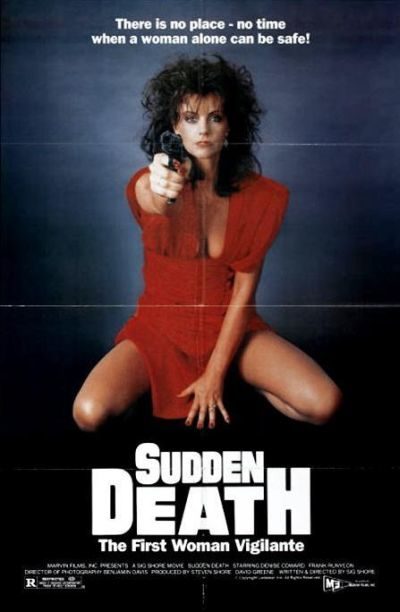 The star of this rape-revenge film, Denise Coward is a former beauty-queen, who was the second runner-up at Miss World in 1978, representing Australia. She didn’t exactly have a long movie career – this and sci-fi flick Galaxy representing roughly the sum total of it. Watching this, it’s easy to understand why, though it would require a significantly better actor than her to make a silk purse from the sow’s ear of a script and direction she is given here. Coward plays Valerie Wells, a career woman in New York who gets into the wrong taxi one night. For it has been stolen by a pair of low-lifes, who rape their passenger before dumping her unconscious body on the street. The cops, in particular Detective Marty Lowery (Runyeon) are sympathetic but over-worked, and Coward’s fiancé is about as much help as a chocolate teapot. What’s a girl to do?
The star of this rape-revenge film, Denise Coward is a former beauty-queen, who was the second runner-up at Miss World in 1978, representing Australia. She didn’t exactly have a long movie career – this and sci-fi flick Galaxy representing roughly the sum total of it. Watching this, it’s easy to understand why, though it would require a significantly better actor than her to make a silk purse from the sow’s ear of a script and direction she is given here. Coward plays Valerie Wells, a career woman in New York who gets into the wrong taxi one night. For it has been stolen by a pair of low-lifes, who rape their passenger before dumping her unconscious body on the street. The cops, in particular Detective Marty Lowery (Runyeon) are sympathetic but over-worked, and Coward’s fiancé is about as much help as a chocolate teapot. What’s a girl to do?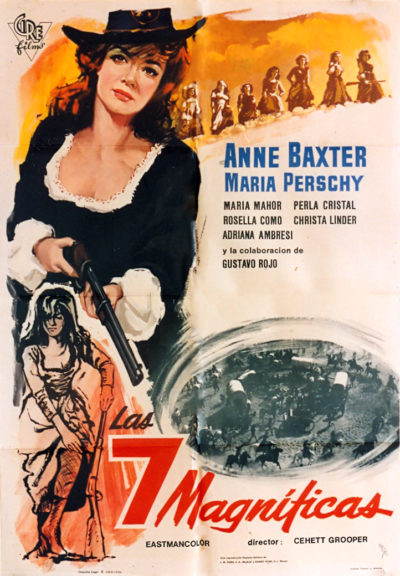 A wagon train on its way West to California is besieged by multiple waves of Apaches. Between attacks, the seven women among the settlers are hidden in a nearby cave, but the next assault proves terminal, and the women are left, alone and deep in enemy territory. The only hope for this band of largely unprepared women, is to strike out across a hostile landscape. They’ll need to cross 100 miles between them and the nearest settlement, Fort Lafayette, while fending off further native attacks.
A wagon train on its way West to California is besieged by multiple waves of Apaches. Between attacks, the seven women among the settlers are hidden in a nearby cave, but the next assault proves terminal, and the women are left, alone and deep in enemy territory. The only hope for this band of largely unprepared women, is to strike out across a hostile landscape. They’ll need to cross 100 miles between them and the nearest settlement, Fort Lafayette, while fending off further native attacks.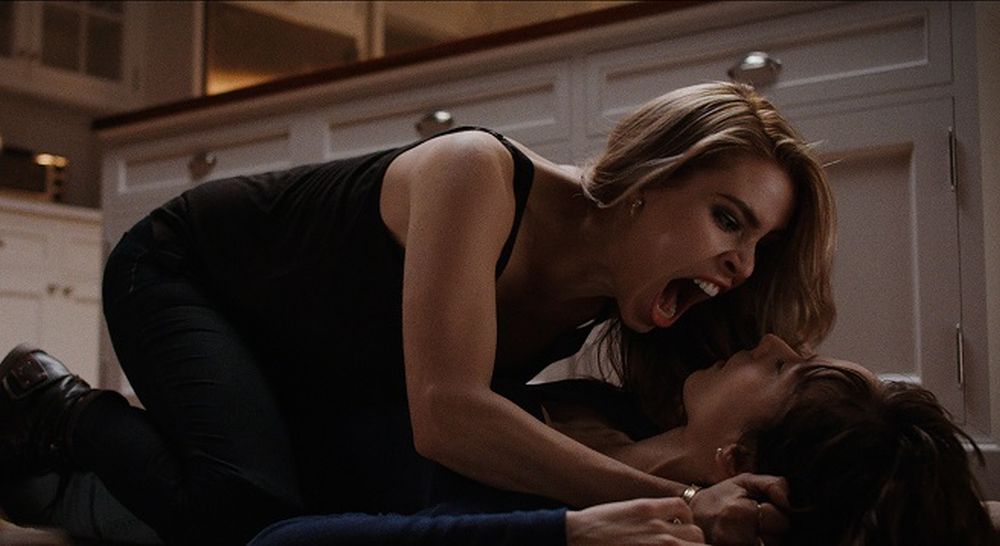 It kinda works, mostly for the dynamics between the trio of leading ladies. At first, Cali’s approach seems sensible, arguably a legitimate way to make the best of a bad situation. However, a change in the scenario shifts things seismically, and even the toughest of her supporters would have to admit an unpleasant streak of psychopathy is opened in her make-up. Evil sometimes wears a pretty face, and Turshen reminded me more than a little of Denise Richards in Wild Things – manipulative and . Less successful, to the point of entire irrelevance, is the boyfriend who shows up and yells for a bit. I suspect, given the slight running time of 75 minutes, his presence may have been a late-added necessity in order to reach feature length.
It kinda works, mostly for the dynamics between the trio of leading ladies. At first, Cali’s approach seems sensible, arguably a legitimate way to make the best of a bad situation. However, a change in the scenario shifts things seismically, and even the toughest of her supporters would have to admit an unpleasant streak of psychopathy is opened in her make-up. Evil sometimes wears a pretty face, and Turshen reminded me more than a little of Denise Richards in Wild Things – manipulative and . Less successful, to the point of entire irrelevance, is the boyfriend who shows up and yells for a bit. I suspect, given the slight running time of 75 minutes, his presence may have been a late-added necessity in order to reach feature length.
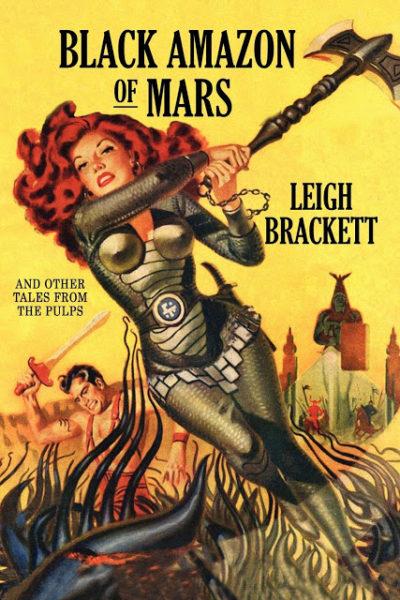 Normally, I like to start a series at the beginning. But I chose to read this second novella of Brackett’s Eric John Stark series, as my long-awaited first introduction to her work, because Amazon offered me the chance to read it for free on my Kindle app. (And yes, I’ll definitely be buying a paper copy!) That means there are unanswered questions here about Stark’s origins and background, and about the Martian world –what kind of “beasts” are used as mounts here, for instance, or what the economic base of a city-state like Kushat is– that probably have answers in the first book, or earlier stories. (The author wrote about the character in both formats, and not all of the corpus is still in print.)
Normally, I like to start a series at the beginning. But I chose to read this second novella of Brackett’s Eric John Stark series, as my long-awaited first introduction to her work, because Amazon offered me the chance to read it for free on my Kindle app. (And yes, I’ll definitely be buying a paper copy!) That means there are unanswered questions here about Stark’s origins and background, and about the Martian world –what kind of “beasts” are used as mounts here, for instance, or what the economic base of a city-state like Kushat is– that probably have answers in the first book, or earlier stories. (The author wrote about the character in both formats, and not all of the corpus is still in print.) Maggie Marvel (Beretta) is a single mom, with all the issues that implies. She has to try and juggle work with raising young daughter, Samantha (Katherine Brennan), on her own. But complicating matters enormously, is that work in this case is operating as an assassin for criminal kingpin Dutch – who also happens to be Maggie’s estranged father, who sent her away after his wife (and thus, Maggie’s mother) tried to poison him. Maggie was raised instead by Dixie Brown (Barron), who also works for Dutch as a killer. For he believes women are better at the job, and though he employs men, such as Bobby Shea (Dan Brennan) and his brothers, they are kept for non-lethal work. However, this line gets blurred as Bobby has fallen for Dixie, and his request that Maggie work with him on a bank robbery – hoping to make Dixie jealous – kicks off a series of events that threaten to destroy Maggie, her family and the entire crime organization.
Maggie Marvel (Beretta) is a single mom, with all the issues that implies. She has to try and juggle work with raising young daughter, Samantha (Katherine Brennan), on her own. But complicating matters enormously, is that work in this case is operating as an assassin for criminal kingpin Dutch – who also happens to be Maggie’s estranged father, who sent her away after his wife (and thus, Maggie’s mother) tried to poison him. Maggie was raised instead by Dixie Brown (Barron), who also works for Dutch as a killer. For he believes women are better at the job, and though he employs men, such as Bobby Shea (Dan Brennan) and his brothers, they are kept for non-lethal work. However, this line gets blurred as Bobby has fallen for Dixie, and his request that Maggie work with him on a bank robbery – hoping to make Dixie jealous – kicks off a series of events that threaten to destroy Maggie, her family and the entire crime organization. At this point, five movies into the franchise, it probably becomes churlish to complain about the aspects that have sustained the series thus far. You’re watching an epic war, waged down the centuries, between vampires and werewolves. It is, literally, non-sense. This, however, is separate and independent from any entertainment value, and despite some issues, this is perhaps the best in the series since the original [some may argue for the third entry, but that appears to have strayed in from a different franchise entirely, containing only peanut-allergy level traces of Selene].
At this point, five movies into the franchise, it probably becomes churlish to complain about the aspects that have sustained the series thus far. You’re watching an epic war, waged down the centuries, between vampires and werewolves. It is, literally, non-sense. This, however, is separate and independent from any entertainment value, and despite some issues, this is perhaps the best in the series since the original [some may argue for the third entry, but that appears to have strayed in from a different franchise entirely, containing only peanut-allergy level traces of Selene].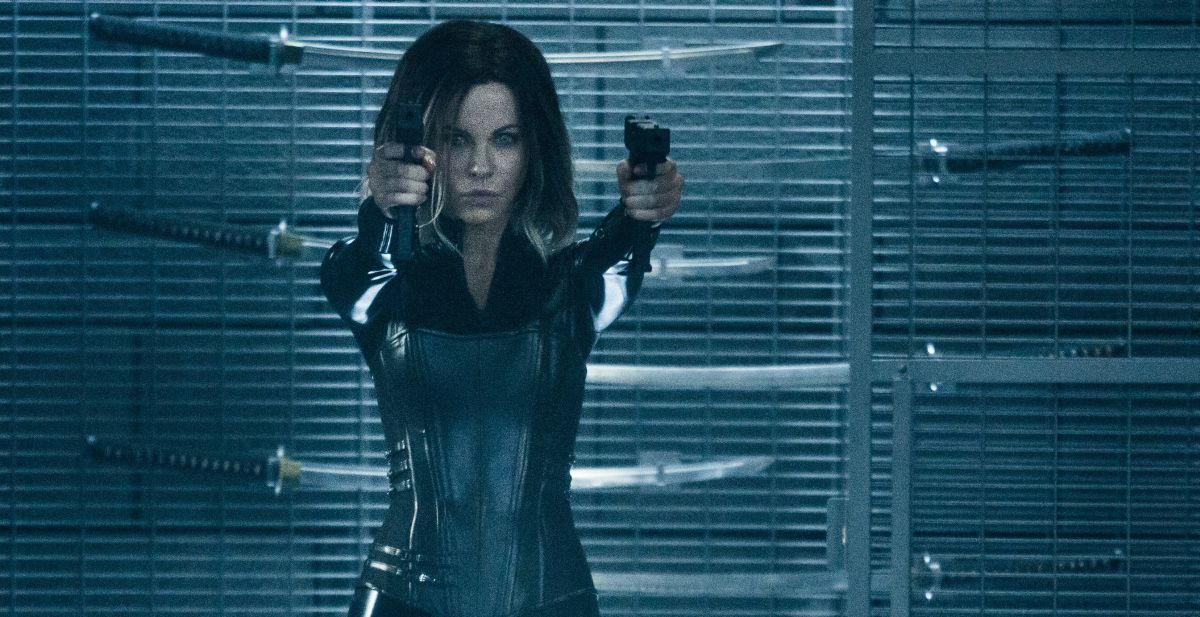 On the plus side, we get a couple of bonus strong female characters. Lara Pulver makes a good impression as the scheming vampire, and Clementine Nicholson does a fine imitation of a low-rent Emilia Clarke, playing the Nordic Coven’s leading warrior, Lena (maybe another GoT nod in that name?). On the downside, the CGI werewolves still look awful, particularly during their transformations, and there’s another (sigh) vampire-werewolf romance, which works out as well as they always do i.e. not very. You’d think people would have learned by now. Then again, this is a universe where Kate Beckinsale is basically the same as she was in 2003 when the first film came out, and is still capable of kicking ass while being easy on the eye.
On the plus side, we get a couple of bonus strong female characters. Lara Pulver makes a good impression as the scheming vampire, and Clementine Nicholson does a fine imitation of a low-rent Emilia Clarke, playing the Nordic Coven’s leading warrior, Lena (maybe another GoT nod in that name?). On the downside, the CGI werewolves still look awful, particularly during their transformations, and there’s another (sigh) vampire-werewolf romance, which works out as well as they always do i.e. not very. You’d think people would have learned by now. Then again, this is a universe where Kate Beckinsale is basically the same as she was in 2003 when the first film came out, and is still capable of kicking ass while being easy on the eye. Movie stunt-woman Laurie Collins (Chase) is out for the night with her sister, Bonnie, until the latter accepts the company of a young man. When things get more than a bit rape-y, and Bonnie ends up shooting her attacker dead. She is convicted of second-degree manslaughter, much to the chagrin of her sister. Worse is to follow after Bonnie is sent to prison, as there, she then falls foul of the jail’s top dog, Kay Butler (Martin). Bonnie soon turns up a corpse, with the incident written off as suicide, due to the heroine found in her veins. But Laurie doesn’t believe a word of it, and deliberately commits grand theft auto, among other crimes, in order to be sent to the same prison, where she can find those responsible, and make them pay for what they did to Bonnie.
Movie stunt-woman Laurie Collins (Chase) is out for the night with her sister, Bonnie, until the latter accepts the company of a young man. When things get more than a bit rape-y, and Bonnie ends up shooting her attacker dead. She is convicted of second-degree manslaughter, much to the chagrin of her sister. Worse is to follow after Bonnie is sent to prison, as there, she then falls foul of the jail’s top dog, Kay Butler (Martin). Bonnie soon turns up a corpse, with the incident written off as suicide, due to the heroine found in her veins. But Laurie doesn’t believe a word of it, and deliberately commits grand theft auto, among other crimes, in order to be sent to the same prison, where she can find those responsible, and make them pay for what they did to Bonnie. Time to set up GirlsWithoutGuns.org, perhaps. For this film brings home that among the most courageous of heroines are the unarmed ones – especially when facing people who are not. Such is the case with Neerja Bhanot, the 22-year-old head purser on Pan Am Flight 73 from Mumbai to New York in 1986. Just before takeoff after a stop in Karachi, the plane was taken over by hijackers from the Palestinian Abu Nidal Organization, who intended to divert it to Cyprus. Bhanot alerted the pilots, allowing them to escape and thwarting that plan. She then discarded the passports of American passengers, stopping the terrorists from targeting them. When they believed Pakistani forces were about to storm the plane, she opened the emergency exits, help shepherd passengers out, and sheltered children from the terrorists’ bullets.
Time to set up GirlsWithoutGuns.org, perhaps. For this film brings home that among the most courageous of heroines are the unarmed ones – especially when facing people who are not. Such is the case with Neerja Bhanot, the 22-year-old head purser on Pan Am Flight 73 from Mumbai to New York in 1986. Just before takeoff after a stop in Karachi, the plane was taken over by hijackers from the Palestinian Abu Nidal Organization, who intended to divert it to Cyprus. Bhanot alerted the pilots, allowing them to escape and thwarting that plan. She then discarded the passports of American passengers, stopping the terrorists from targeting them. When they believed Pakistani forces were about to storm the plane, she opened the emergency exits, help shepherd passengers out, and sheltered children from the terrorists’ bullets.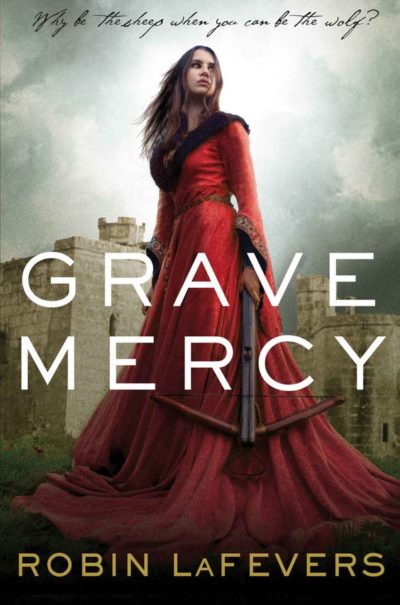 This works rather better as historical fiction than an action novel, and is set in the late 15th century, when the province of Brittany was fighting to remain independent from France. Such high-level political machinations are far above the heads of most inhabitants, who are busy with everyday survival. At the beginning of the book, this includes the heroine, 17-year-old Ismae, who is more concerned about her upcoming, unwanted marriage – more of a sale by her father, to be honest – to a brutal husband. Rescue comes in an unexpected form, as she is whisked away to the Convent of St. Mortain, devoted to one of the pagan gods, absorbed into the Catholic faith as a saint. Mortain’s field is death, and Ismae, who has a natural immunity to poison, is trained in his dark arts. She becomes a tool used by the Mother Superior – albeit for political ends as much as religious ones.
This works rather better as historical fiction than an action novel, and is set in the late 15th century, when the province of Brittany was fighting to remain independent from France. Such high-level political machinations are far above the heads of most inhabitants, who are busy with everyday survival. At the beginning of the book, this includes the heroine, 17-year-old Ismae, who is more concerned about her upcoming, unwanted marriage – more of a sale by her father, to be honest – to a brutal husband. Rescue comes in an unexpected form, as she is whisked away to the Convent of St. Mortain, devoted to one of the pagan gods, absorbed into the Catholic faith as a saint. Mortain’s field is death, and Ismae, who has a natural immunity to poison, is trained in his dark arts. She becomes a tool used by the Mother Superior – albeit for political ends as much as religious ones.